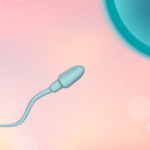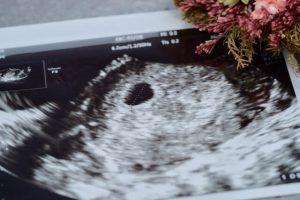Summary of This Article
“Oshiru” is a term used in medical terminology to refer to a blood-tinged mucous discharge seen before the start of labor. “Rupture of membranes” refers to the breaking of the amniotic sac and the release of amniotic fluid through the vagina. It usually occurs before labor, but sometimes it happens before labor begins, known as preterm rupture of membranes. Labor contractions occur when the uterus contracts to push the baby out of the mother’s body. When uterine contractions become regular and occur more than six times an hour, they are recognized as labor, progressing towards childbirth.
- Introduction
- What Happens to Pregnant Women Before Childbirth
- What is “Oshiru”?
- What is Rupture of Membranes?
- What is Labor?
- Order of Oshiru, Rupture of Membranes, and Labor
- Prepare Early for a Peaceful Delivery
- To Welcome a Healthy Baby
- Conclusion
Introduction
From the day pregnancy is confirmed, most expectant mothers spend their days filled with joy and simultaneous anxiety about whether they will be able to give birth safely. Especially for first-time pregnancies, many women research the signs of early pregnancy, labor, and rupture of membranes through books and the internet.
Before childbirth, it is common to experience signs known as “oshiru,” as well as rupture of membranes and labor. By knowing the order in which “oshiru,” rupture of membranes, and labor occur, as well as the characteristics and countermeasures for each, you can mentally prepare for childbirth.
What Happens to Pregnant Women Before Childbirth
The main events that occur in pregnant women before childbirth are “oshiru,” rupture of membranes, and labor.
There are individual differences in the presence, timing, and order of these signs of labor. However, by knowing their general characteristics and the appropriate measures and treatments in advance, you can respond calmly to sudden signs of labor and approach childbirth with confidence.
What is “Oshiru”?
“Oshiru” is referred to in medical terms as “sanchou,” which is a blood-tinged mucous discharge seen before the onset of labor.
As childbirth approaches, the cervix gradually begins to dilate. During this process, the fetal membrane separates from the uterine wall, causing a small amount of bleeding that mixes with mucus. This mixture is commonly known as “oshiru.”
Not all pregnant women experience oshiru. Some may not notice it, or they may proceed to labor without any signs of oshiru.
In many cases, when oshiru occurs, childbirth can follow within a few days to a few weeks. When oshiru is observed, do not panic; instead, calmly prepare for childbirth and hospitalization.
Color and Amount of Oshiru
The color and amount of oshiru vary among individuals. The color can range from light red, where mucus is mixed with blood, to dark brown. The quantity can also vary, from a small amount that stains underwear to an amount similar to that of menstrual flow.
If the amount of bleeding is more than that typically seen on the second day of menstruation or if the discharge is watery rather than mucous-like, contact your hospital.
What to Do When Oshiru Occurs
Typically, even if oshiru occurs, it does not immediately lead to rupture of membranes or labor. There is usually some time before childbirth, so there is no need to panic. Instead, use sanitary pads to manage the discharge. If the due date is approaching and oshiru could occur at any time, wearing a pad in advance can help maintain cleanliness.
Heavy or Prolonged Bleeding from Oshiru
If the amount of bleeding from oshiru is excessive or the bleeding continues for an extended period, it may indicate that not only the fetal membrane but also the placenta is detaching. Additionally, if you experience abdominal tightness or severe pain, consult your hospital immediately and seek a medical examination.
What is Rupture of Membranes?
Rupture of membranes refers to the breaking of the amniotic sac (fetal membrane) that encloses the amniotic fluid and the fetus, resulting in the leakage of amniotic fluid through the vagina. It is noted that there is no pain associated with the rupture of membranes itself.
Usually, the rupture of membranes occurs before labor begins, but it is not uncommon for it to happen before the onset of labor, known as prelabor rupture of membranes. If the rupture of membranes occurs before labor starts, contact your hospital or midwife immediately and follow their instructions.
The Amount of Fluid in Rupture of Membranes Varies Among Individuals
The amount of amniotic fluid that leaks during the rupture of membranes varies depending on the location and manner of the membrane rupture. Consequently, while there are cases where a large amount of amniotic fluid is released all at once, it is also common for the fluid to trickle out gradually.
What to Do When Rupture of Membranes Occurs? Appropriate Measures
When the amniotic sac that holds the amniotic fluid ruptures and the fluid leaks out, the risk of infection to the fetus increases. Typically, labor begins shortly after the rupture of membranes. Use maternity pads or clean towels to manage the situation and contact the hospital immediately.
Avoid walking during the rupture of membranes and arrange for transportation by taxi or car. Bathing or showering is strictly prohibited due to the risk of bacterial infection.
When You Can’t Tell if It’s Rupture of Membranes or Urinary Leakage
In the final month of pregnancy, many expectant mothers experience urinary incontinence due to the pressure of the uterus on the bladder. This can make it difficult to distinguish between rupture of membranes and urine leakage, leading to delayed recognition of the rupture.
The primary difference between amniotic fluid (from rupture of membranes) and urine is the smell. Amniotic fluid is typically odorless or has a slightly fishy smell, whereas urine has an ammonia-like odor. Don’t panic; check in the bathroom.
Additionally, in the case of rupture of membranes, you cannot stop the flow at will, unlike urine. The inability to control the flow can also help distinguish between rupture of membranes and urine leakage.
Pay Attention to Preterm and Early Rupture of Membranes
Rupture of membranes typically occurs around the time labor begins. When it happens before labor starts, it is called “prelabor rupture of membranes,” and most pregnant women head to the hospital at this time.
On the other hand, “early rupture of membranes” refers to the rupture that occurs after the onset of labor but before the cervix is fully dilated.
Rupture of membranes can lead to a decrease in the amniotic fluid that protects the fetus, increasing the risk of infection from vaginal bacteria or other pathogens. Both prelabor and early rupture of membranes carry risks, so it is important to contact the hospital and seek medical attention immediately if rupture of membranes occurs.
Risks Associated with Preterm Rupture of Membranes
- Infections to the Fetus and Mother (Uterus)
- Abnormal Fetal Position and Presentation
- Placental Abruption
Risks of Early Preterm Rupture of Membranes (Leading to Preterm Birth and Premature Babies)
- Infections to the Fetus and Mother (Uterus)
- Respiratory Disorders
- Intracranial Hemorrhage (Cerebral Palsy)
- Death

What is Labor?
Labor contractions occur when the uterus contracts to push the baby out of the mother’s body. When uterine contractions become regular and occur more than six times an hour (with intervals of 10 minutes or less), they are recognized as labor, progressing towards childbirth.
What to Do When You Think It’s Labor?
When a pregnant woman close to her due date feels pain in her abdomen, she may first suspect labor contractions and wonder what to do.
There is a type of contraction called “false labor” (prelabor contractions), which often begins in the mid to late stages of pregnancy. True labor contractions occur regularly, but false labor contractions cause irregular tightening and varying degrees of pain in the abdomen.
False labor can occur several times a day, and the number of days before it leads to true labor varies for each individual. Since the experience differs for each pregnant woman, it is advisable to record the intervals and intensity of the pain. If there are any concerns, it is best to consult with the attending hospital.
Order of Oshiru, Rupture of Membranes, and Labor
The sequence of oshiru, labor contractions, and rupture of membranes varies among individuals. Generally, it is believed that the order is often “oshiru → rupture of membranes → labor contractions” or “oshiru → labor contractions → rupture of membranes,” but this is just a guideline.
There are cases where labor contractions occur before the rupture of membranes, or where labor begins with a sudden rupture of membranes or contractions without any preceding oshiru. The amount of oshiru and rupture of membranes, as well as the intensity of labor contractions, also vary significantly among individuals. Therefore, it is good to be mentally prepared to handle any sequence of events.
When to Go to the Hospital
In the late stages of pregnancy or during the final month, many expectant mothers may feel anxious about when to go to the hospital.
Oshiru
If only oshiru has started, there is no need to go to the hospital immediately. With normal oshiru, it typically does not progress to rupture of membranes or labor contractions right away.
Rupture of Membranes
If rupture of membranes occurs, go to the hospital immediately. The leakage of amniotic fluid increases the risk of infections for the fetus and complications such as placental abruption.
Labor
If the pain is irregular, as in the case of false labor, there is no need to rush to the hospital. However, if regular pain begins, it is likely labor contractions, indicating that childbirth is near. In such cases, contact the hospital and follow their instructions.
Prepare Early for a Peaceful Delivery
In the later stages of pregnancy, it is a good idea to prepare the necessary items in advance in case of rupture of membranes or sudden hospitalization. Note that some hospitals may prohibit bringing certain items, such as towels, so it is important to check in advance what to bring when you are admitted.
Things to Prepare
The following are the four main items needed before or during childbirth:
- Towels
- Large sheets or plastic bags
- Sanitary pads, adult diapers, or maternity pads
- Transportation such as a car or taxi
Towels
In case of sudden rupture of membranes, clean towels may be needed. If the hospital allows bringing towels, they can be used for various purposes during your stay. It’s a good idea to prepare an ample number of towels in different sizes.
Large Sheets or Plastic Bags
When heading to the hospital by taxi or car, consider the possibility of amniotic fluid leaking and wetting the vehicle’s interior. Placing a large sheet or plastic bag under your body can help prevent any mess.
Sanitary Pads, Adult Diapers, or Maternity Pads
Sanitary pads or adult diapers can be useful during oshiru or rupture of membranes. Maternity pads are also available, so it’s a good idea to prepare these items in advance.
Since rupture of membranes can occur suddenly, it is reassuring to wear high-absorbency pads or diapers as the due date approaches.
Means of Transportation Such as a Car or Taxi
To prepare for sudden rupture of membranes or labor, ensure you have a means of transportation to the hospital, such as a car or taxi. Since driving yourself is difficult during rupture of membranes or labor, ask your husband, partner, or family member to drive.
If the hospital where you plan to give birth is far away and you are concerned about long-distance travel, consider using a labor taxi (maternity taxi). A labor taxi is a service that allows you to quickly get to the hospital by pre-registering your due date and pick-up address. Since reservation methods and fees vary by taxi company, it is important to check these details in advance.

To Welcome a Healthy Baby
Pregnancy and childbirth bring joy, but many expectant mothers also experience various anxieties. It’s natural to want to know the baby’s gender and health status as soon as possible.
NIPT (Non-Invasive Prenatal Testing) allows for the determination of the baby’s gender and the presence of congenital disease risks immediately after pregnancy is confirmed through an ultrasound examination.
Chromosomal abnormalities in the baby can often lead to preterm birth or miscarriage. NIPT (Non-Invasive Prenatal Testing) can be considered a test to identify various risks in advance, ensuring a healthy pregnancy period.
NIPT (Non-Invasive Prenatal Testing) for a Healthy Pregnancy and Delivery
NIPT (Non-Invasive Prenatal Testing) is a test that only requires about 10 ml of blood from the mother. Unlike amniocentesis or chorionic villus sampling, there is no need for puncturing the mother’s body or transvaginal tissue sampling.
For these reasons, NIPT (Non-Invasive Prenatal Testing) is considered to have very low risk of miscarriage or other complications since it does not directly invade (damage) the fetus.
What Can Be Learned from NIPT?
With NIPT (Non-Invasive Prenatal Testing), you can learn about the potential risk of chromosomal abnormalities in the baby.
NIPT (Non-Invasive Prenatal Testing) can detect Down syndrome (Trisomy 21), the most common chromosomal abnormality, with a high accuracy of 99.9% sensitivity and specificity.
Additionally, NIPT (Non-Invasive Prenatal Testing) can also determine the baby’s gender based on sex chromosomes. Normally, gender is determined by ultrasound examination from 18 to 20 weeks of pregnancy, but with NIPT, it can be determined immediately after pregnancy is confirmed by ultrasound.
Until When Can NIPT Be Taken?
NIPT (Non-Invasive Prenatal Testing) can be performed immediately after pregnancy is confirmed by ultrasound. While it is possible to perform the test after the 10th week, if considering a follow-up definitive test (amniocentesis) after the screening test NIPT, it is recommended to do so by the 16th week.
Conclusion
Signs of impending childbirth include oshiru, rupture of membranes, and labor contractions. These signs vary among individuals, so the presence of oshiru and the timing and condition of rupture of membranes and labor contractions can differ. However, understanding their characteristics and knowing how to respond, along with preparing in advance, can help you approach the day of delivery with confidence.
Additionally, knowing the health risks of the baby early through NIPT (Non-Invasive Prenatal Testing) can be considered a part of the preparations for a healthy pregnancy and delivery.
If you have any questions about NIPT (Non-Invasive Prenatal Testing) or congenital diseases caused by chromosomal abnormalities, please consult with Hiro Clinic NIPT. Our experienced doctors and staff will provide you with thorough support.
【References】
- Japan Association of Obstetricians and Gynecologists
- Ministry of Health, Labour and Welfare e-Health Net – Rupture of Membranes
Article Editorial Supervisor

Dr Hiroshi Oka
NIPT specialist clinic, MD
Graduated from Keio University, School of Medicine
 中文
中文






















